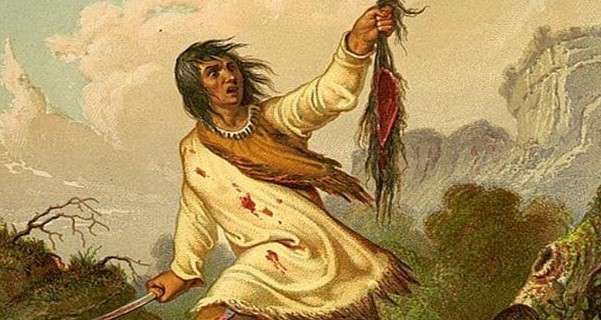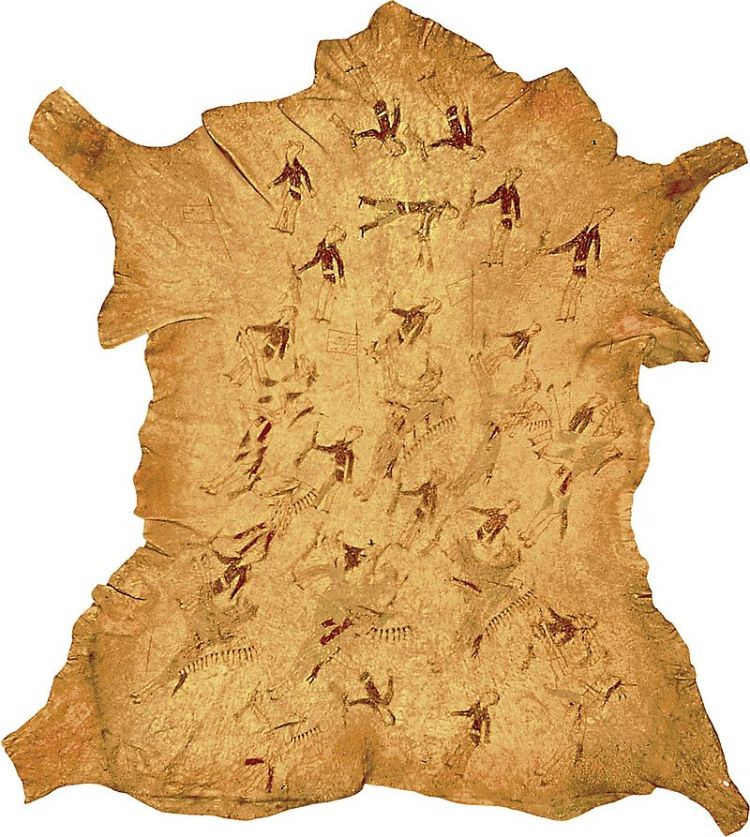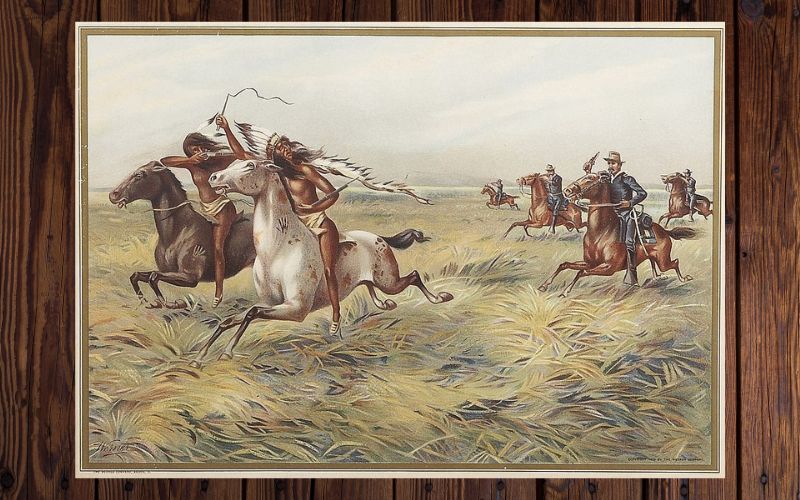See more Riley’s Ramblings ➡️
July 1877, Fort Laramie, Wyoming
My new friend, Randy, is a fountain of information about anything war or Indian related. His pa, First Sergeant Ralph McGuire, no doubt relates every bloody detail about any of his father’s encounters with the “enemy,” as Randy calls them. I can’t help it. I listen with wide eyes and burning ears. Pa would probably have my hide if he heard the tales Randy told, but I can’t stop listening. Randy’s family has been at Fort Laramie for five years, so he’s seen it all. Even an old scalp.
He showed it to me and I couldn’t help it. My stomach churned and I was sure I would lose my lunch. The scalp was old and dried up, but still. That length of black hair and the skin once belonged to a real person, maybe even to a boy like my friend Washakie. I didn’t ask Randy where he got it, but he volunteered the information before I could stop him. “Private Forester gave it to me,” he said proudly. “He collected a bunch of them during one battle or another.”
I saw nothing proud about the whole thing, but I could see that Randy was very excited. “The scalp might be from the big battle last year.” He shrugged. “So many troopers lost their scalps, but Forester managed to come away from that battle alive and with a couple of souvenirs.”

The Great Sioux War of 1876-1877
Before I could catch my breath, Randy launched into a detailed description of the Great Sioux War. The treaty was signed just before we arrived at the fort, but Pa didn’t have much to do with it, being newly arrived and all. I knew nothing about any wars, having been immured at Fort Bridger during some of the later battles.
Listening to Randy, I felt rather sorry for the Indians. I had two great Indian friends back at Fort Bridger, and I couldn’t image ever going to war against them. But Randy filled me in on how it all came about. I guess gold had been discovered in the Black Hills of Dakota Territory, and where there’s gold, there’s greed and all manner of evil.
“The Sioux didn’t care a whit about the gold,” Randy said, twirling a piece of straw between his fingers. He and I were lounging, as usual, in the horse stables.
I spend all of my free time there. I’ve learned the names of all the horses and brush and groom them whenever I can. The soldiers grin and like the fact that a twelve-year-old boy wants to do all the dirty work, while they get to ride and parade. I don’t care. I love the horses, and they respond to me with nickers and happy whickers when they see me approaching.
“I don’t suppose they have much use for gold,” I agreed, sliding down next to Randy.
“Nope,” he agreed. “The Lakota Sioux just wanted to keep their historic hunting grounds.”
I didn’t blame them for that. Who would want to be kicked out of their homes and off their own property?
“A whole bunch of American settlers set up camp in the Black Hills and wanted it for their own,” Randy said. “The Lakota Sioux basically said, ‘Nothing doing.’ So then, of course, the battles began.”
Randy went on and on, eyes shining, about all of the battles, but he turned a little serious when he retold the story of a place called the Little Big Horn. The battle took place when I was still living on the Circle C ranch, during the summer of 1876. I was glad Pa was still at the Presidio in San Francisco and had not been called out to the territories to join the fray.
I gasped when Randy got to the climax and was even happier that Pa had been far, far away during that battle. The 7th cavalry regiment with twelve whole companies and over 700 expert riders lost the battle! Five of the companies were wiped out (268 men), and their brave leader, Colonel George Custer, was killed too. The Sioux won the battle, but in the end they lost the war.

“The soldiers got more help and resources from the government and that turned the tide,” Randy went on. (That boy sure knows his history, and he always gets As in school for history.) “The soldiers attacked the Indians’ encampments and destroyed their property. I’m sure a lot of Indian villages were wiped out.” For once, Randy looked regretful. “We lost so many soldiers and the Indians lost many of their warriors and people too.”
So, they surrendered. An agreement (treaty) was signed in February 1877, while Pa was assigned to Fort Bridger, and the Sioux gave up their territory. I asked Randy where they went, and he shrugged. “I don’t know.”
Randy stood up. “Come on, Riley. I wanna show you something.” All the way back to his house, Randy was quiet. I reckon retelling the story about the last stand of that Custer fellow sobered him up faster than a bucket of cold water, even a whole year later. I followed him into his room. He dug around inside a wooden create and pulled out some kind of animal skin. “Private Forester scrounged this too.” He held it up.
I took it gingerly. “What is it?”
“The Siouxs’ idea of that last battle, our colonel’s “last stand,” as everybody is beginning to call it.”
The skin showed a lot of Indians riding horses but even more pictures of dead soldiers. I glanced at it and handed it back. I felt a little sick. Then Randy brought out a wrinkled and much-handled newspaper article from the New York Times. I read about the massacre at the Little Big Horn and felt terrible for all those lost lives.


I know. My pa is Captain Prescott. He leads his troop of 100 cavalry soldiers. I know he fights Indians. I know he might be killed. But Pa never talks much about the battles and I don’t ask. Now, I’m a little frightened of what Pa might have to do next. I truly hope this new treaty keeps everybody from wanting to fight and kill each other.
I wish I was back on the Circle C ranch. I wish my friend Andi and I were playing with the Yokut Indian children. They never go fighting any wars.
After hearing Randy’s stories, I dug into my box of treasures and pulled out the photograph (in the fancy, gilded frame) that Andi gave me when I left the ranch. I don’t know if she will remember me, not with her friend Cory around to take my place as her racing and fishing friend. I sigh.
You might not remember me, Andi Carter, but I will never, ever forget you.



I love this post Mrs m 😊
LikeLike
This is great Mrs. M!!❤️
LikeLike
Such a sad time in history. Glad I didn’t live back then.
LikeLiked by 1 person
Love the post! It is so sad that people fought bc of greed and envy.
LikeLike
Those people must have been so brave. If I had lived back then. I don’t think I would have been scared to die because I would be up in heaven with Jesus. I think I would have been more scared to have loved ones die. I’m not scared of war because I might die. I am scared of war because my family might die.🥺🥺 I thank God that he ended the war against Indians and Americans.
The other day I was at a fall festival and they had a parade. There were these two little kids on horses next to each other. The little girl was dressed as an Indian and the little boy was dressed as a cowboy. That reminded me of how thankful we should be to God for ending that war. 🙏🙏🙏 Btw sorry this is so long.
LikeLiked by 2 people
The last line was so sweet
LikeLike